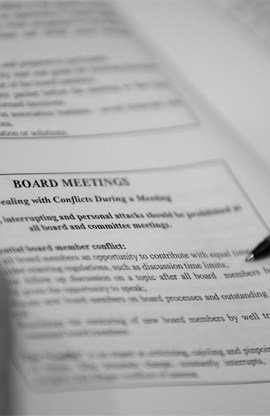by Beth Mulcahy, Esq.
Working with many association documents over the years has given me insight regarding how to best approach the amendment process for such documents. My secret to successfully amending CC&Rs is using a five step plan.
Associations want to amend their documents for the following reasons: to delete or modify restrictions that are outdated, ambiguous or unreasonable; to comply with changes in federal, state and local laws or ordinances; to delete or modify provisions inconsistent with the management and operation of the association; to delete provisions regarding the rights of the developer after the developer is no longer in control; and to correct provisions that conflict with other governing documents (bylaws, articles of incorporation and rules and regulations).
Because there are several requirements which must be met prior to amending an association’s documents, an association should prepare a strategy for amending the documents to assure that the documents meet the needs of the association and are enforceable.
Step One: Determine what is required to amend the documents.
• Typically, there is a provision in each document which outlines the proper procedures to amend the CC&Rs, articles of incorporation, bylaws and rules and regulations.
• Most documents require a vote of the membership, additionally, in many associations; a percentage of the membership must approve the amendment. In some rare cases, the association’s board of directors can amend the documents without the approval of a percentage of the membership.
• The condominium act requires a minimum approval of 67% of the votes within the condo association to amend the CC&Rs (but look to documents in a condo for a higher amendment requirement).
Step Two: Review the documents for changes and draft the proposed changes.
• The board of directors should form a committee to research and prepare amendments to the association’s documents.
• The amendment committee should solicit the ideas of committee members, board members and owners regarding changes to the documents and draft the proposed changes.
• It is important that the association’s legal counsel review the documents and assist in the drafting of proposed changes during this step so that the documents are legally proper and enforceable.
Step Three: Educate and solicit community support of the proposed changes.
• The board and/or amendment committee should use informational meetings, homeowner input forums, town hall meetings, coffees and/or newsletters and other printed materials to educate and inform the membership of potential changes.
• The input and comments should be discussed by the board and/or amendment committee and legal counsel and final changes to the proposed amendments should be made at this time.
Step Four: Develop a plan and a reasonable time frame for obtaining approval of the proposed amendments.
• The amendment committee and legal counsel should create strategic steps and plan of action for completion (owner meeting/use of mail-in ballot), with a time line and proposed dates for voting.
Step Five: Finalize and record the CC&Rs.
• Once the amendments to the CC&Rs have been approved as specified in the documents, the CC&R amendments must be placed into final form and recorded at the county recorder’s office to become enforceable.
• The Condominium Act requires amendments to the CC&Rs to be recorded within 30 days from the date approved.
• Bylaws and rules do not need to be recorded, but should be maintained with the official records of the association. Legal counsel should assist with this process.
If you need assistance with amending your association documents please contact Mulcahy Law Firm, P.C. at 602.241.1093.
